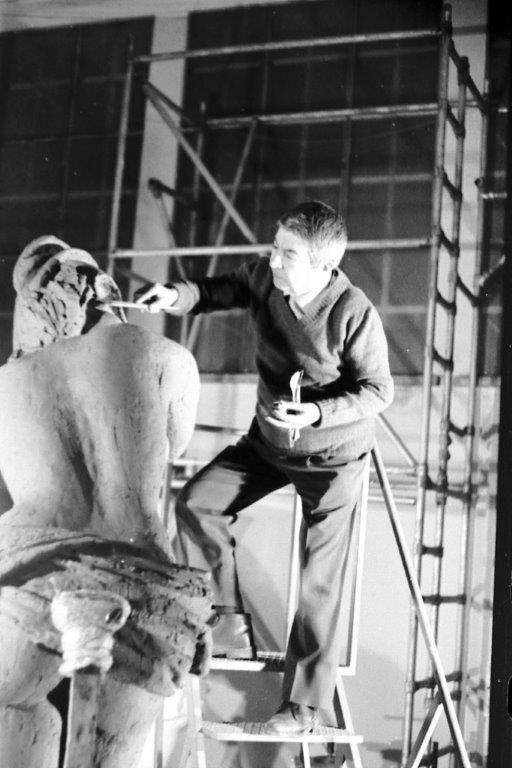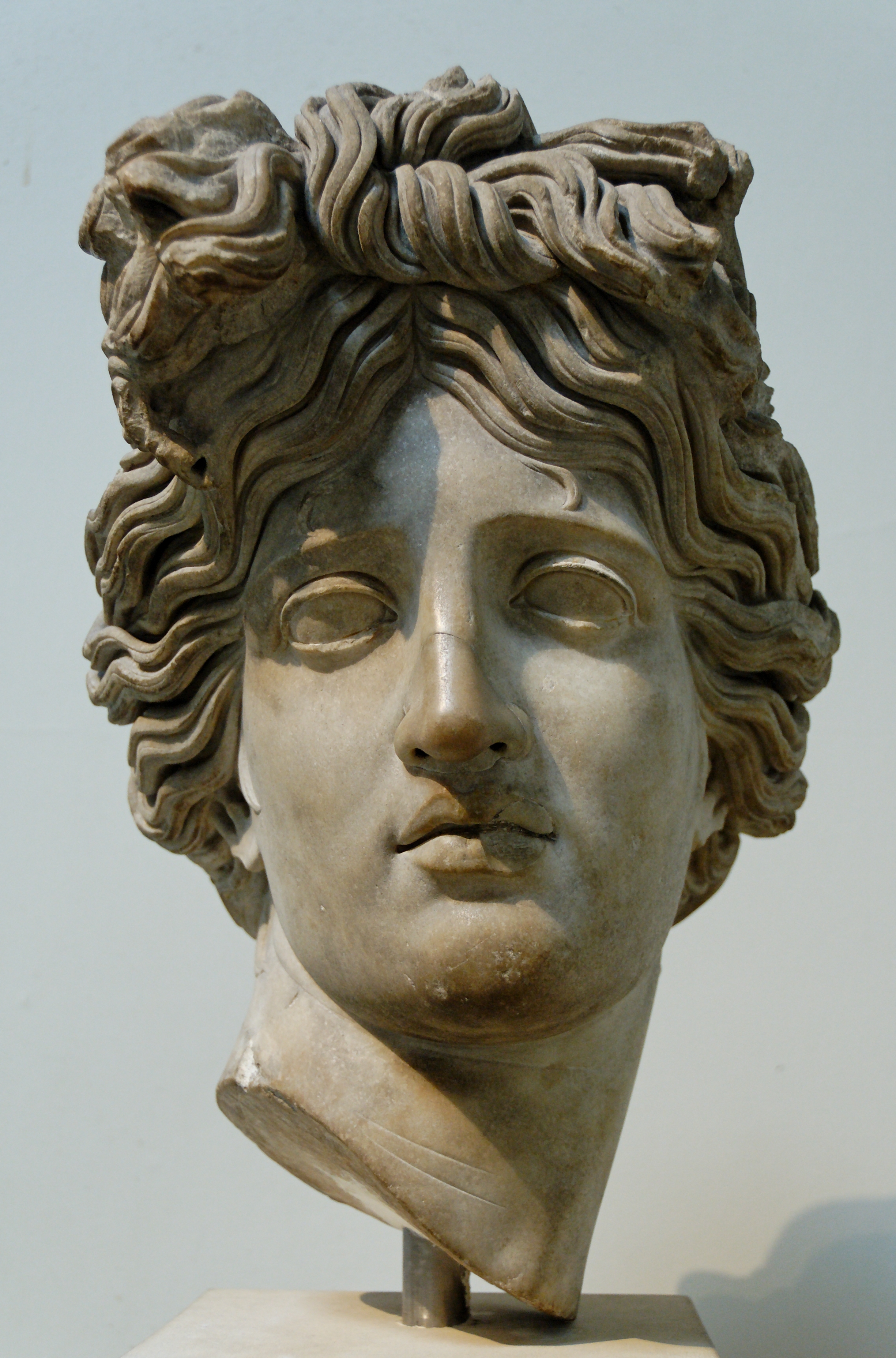|
Venanzo Crocetti Museum
Museum Venanzo Crocetti is a contemporary art museum dedicated to the work of the Italian sculptor Venanzo Crocetti (1913–2003). The museum is located in Rome at Via Cassia, 492. History The museum is housed in the building that originally was the main studio of the sculptor. Organisation Venanzo Crocetti Museum preserved over a hundred bronzes, marbles, paintings, works on paper and documents that span a period of time ranging from 1930 to 1998. Venanzo Crocetti works are in Rome, Brussels, Paris, Bern, Zurich, New York, San Paolo of Brazil, Montreal, Tokyo and Osaka. In 1991, in Saint Petersburg, the Hermitage Museum has dedicated to the Venanzio Crocetti work a permanent exhibition. Hermitage ... [...More Info...] [...Related Items...] OR: [Wikipedia] [Google] [Baidu] |
Contemporary Art
Contemporary art is the art of today, produced in the second half of the 20th century or in the 21st century. Contemporary artists work in a globally influenced, culturally diverse, and technologically advancing world. Their art is a dynamic combination of Medium (arts), materials, methods, concepts, and subjects that continue the challenging of boundaries that was already well underway in the 20th century. Diverse and eclectic, contemporary art as a whole is distinguished by the very lack of a uniform, organising principle, ideology, or "-ism". Contemporary art is part of a cultural dialogue that concerns larger contextual frameworks such as personal and cultural identity, family, community, and nationality. In vernacular English, ''modern'' and ''contemporary'' are synonyms, resulting in some conflation and confusion of the terms ''modern art'' and ''contemporary art'' by non-specialists. Scope Some define contemporary art as art produced within "our lifetime," recognising tha ... [...More Info...] [...Related Items...] OR: [Wikipedia] [Google] [Baidu] |
Venanzo Crocetti
Venanzo Crocetti (1913–2003) was an Italian sculptor. He was born in Giulianova, Abruzzo. In 1938 Venanzo Crocetti received the Grand Prize in the 19th Venice Biennale. "The Door of the Sacraments" of the St. Peter's Basilica Crocetti finished in 1966.cfr. Ralf van Bühren 2008, pp. 313-314. In 1972 he was nominated as president of the Accademia di San Luca. Crocetti received the Golden Decoration from the Italian Ministry of Education for his achievement in fine art and culture. Venanzo Crocetti Museum is a foundation in Rome , established_title = Founded , established_date = 753 BC , founder = King Romulus (legendary) , image_map = Map of comune of Rome (metropolitan city of Capital Rome, region Lazio, Italy).svg , map_caption ... dedicated to the work of the artist. Notes References * Bühren, Ralf van: ''Kunst und Kirche im 20. Jahrhundert. Die Rezeption des Zweiten Vatikanischen Konzils'' (Konziliengeschichte, Reihe B: Unte ... [...More Info...] [...Related Items...] OR: [Wikipedia] [Google] [Baidu] |
Studio
A studio is an artist or worker's workroom. This can be for the purpose of acting, architecture, painting, pottery (ceramics), sculpture, origami, woodworking, scrapbooking, photography, graphic design, filmmaking, animation, industrial design, radio or television production broadcasting or the making of music. The term is also used for the workroom of dancers, often specified to dance studio. The word ''studio'' is derived from the , from , from ''studere'', meaning to study or zeal. The French term for studio, ''atelier'', in addition to designating an artist's studio is used to characterize the studio of a fashion designer. ''Studio'' is also a metonym for the group of people who work within a particular studio. :uz:Studiya Art studio The studio of any artist, especially from the 15th to the 19th centuries, characterized all the assistants, thus the designation of paintings as "from the workshop of..." or "studio of..." An art studio is sometimes called an atelier, ... [...More Info...] [...Related Items...] OR: [Wikipedia] [Google] [Baidu] |
Bronze
Bronze is an alloy consisting primarily of copper, commonly with about 12–12.5% tin and often with the addition of other metals (including aluminium, manganese, nickel, or zinc) and sometimes non-metals, such as phosphorus, or metalloids such as arsenic or silicon. These additions produce a range of alloys that may be harder than copper alone, or have other useful properties, such as ultimate tensile strength, strength, ductility, or machinability. The three-age system, archaeological period in which bronze was the hardest metal in widespread use is known as the Bronze Age. The beginning of the Bronze Age in western Eurasia and India is conventionally dated to the mid-4th millennium BCE (~3500 BCE), and to the early 2nd millennium BCE in China; elsewhere it gradually spread across regions. The Bronze Age was followed by the Iron Age starting from about 1300 BCE and reaching most of Eurasia by about 500 BCE, although bronze continued to be much more widely used than it is in mod ... [...More Info...] [...Related Items...] OR: [Wikipedia] [Google] [Baidu] |
Marble Sculpture
Marble has been the preferred material for stone monumental sculpture since ancient times, with several advantages over its more common geological "parent" limestone, in particular the ability to absorb light a small distance into the surface before refracting it in subsurface scattering. This gives an attractive soft appearance that is especially good for representing human skin, which can also be polished. Of the many different types of marble the pure white ones are generally used for sculpture, with coloured ones preferred for many architectural and decorative uses. The degree of hardness is right to carve without too much difficulty, but still give a very durable result, if not exposed to acid rain or seawater. Famous individual types and quarries include from classical times Parian marble from Paros, used for the ''Venus de Milo'' and many other Ancient Greek sculptures, and Pentelic marble, from near Athens, used for most of the Parthenon sculptures, and by the Roma ... [...More Info...] [...Related Items...] OR: [Wikipedia] [Google] [Baidu] |
Saint Petersburg
Saint Petersburg ( rus, links=no, Санкт-Петербург, a=Ru-Sankt Peterburg Leningrad Petrograd Piter.ogg, r=Sankt-Peterburg, p=ˈsankt pʲɪtʲɪrˈburk), formerly known as Petrograd (1914–1924) and later Leningrad (1924–1991), is the second-largest city in Russia. It is situated on the Neva River, at the head of the Gulf of Finland on the Baltic Sea, with a population of roughly 5.4 million residents. Saint Petersburg is the fourth-most populous city in Europe after Istanbul, Moscow and London, the most populous city on the Baltic Sea, and the world's northernmost city of more than 1 million residents. As Russia's Imperial capital, and a historically strategic port, it is governed as a federal city. The city was founded by Tsar Peter the Great on 27 May 1703 on the site of a captured Swedish fortress, and was named after apostle Saint Peter. In Russia, Saint Petersburg is historically and culturally associated with t ... [...More Info...] [...Related Items...] OR: [Wikipedia] [Google] [Baidu] |
Hermitage Museum
The State Hermitage Museum ( rus, Государственный Эрмитаж, r=Gosudarstvennyj Ermitaž, p=ɡəsʊˈdarstvʲɪn(ː)ɨj ɪrmʲɪˈtaʂ, links=no) is a museum of art and culture in Saint Petersburg, Russia. It is the list of largest art museums, largest art museum in the world by Art gallery, gallery space. It was founded in 1764 when Empress Catherine the Great acquired an impressive collection of paintings from the Berlin merchant Johann Ernst Gotzkowsky. The museum celebrates the anniversary of its founding each year on 7 December, Saint Catherine's Day. It has been open to the public since 1852. The ''Art Newspaper'' ranked the museum 6th in their list of the List of most visited art museums, most visited art museums, with 1,649,443 visitors in 2021. Its collections, of which only a small part is on permanent display, comprise over three million items (the numismatics, numismatic collection accounts for about one-third of them). The collections occupy a l ... [...More Info...] [...Related Items...] OR: [Wikipedia] [Google] [Baidu] |
Accademia Nazionale Di Santa Cecilia Musical Instruments Museum
The Accademia Nazionale di Santa Cecilia Musical Instruments Museum (MUSA) is the museum holding the instruments collection of musical instruments of the Accademia Nazionale di Santa Cecilia. Description Its location is the Auditorium Parco della Musica in Rome, Italy. It was designed by architect Renzo Piano and inaugurated in February 2008. In the exhibition gallery some 130 instruments are on display and about 50 luthiery tools in an open-air laboratory where the museum luthiers work. Collection The exhibition path moves through plucked string instruments, bowed, winds, harps, lyres and also includes keyboards. Amongst the most important instruments in the collection is the violin known as the 'Tuscan Strad' built by Antonio Stradivari in 1690 together with the four instruments forming the so-called 'Maedicean quintet', built for the Grand Prince Ferdinando de' Medici. Another outstanding piece is the viola by David Tecchler, the German born luthier who worked in Rome in the ... [...More Info...] [...Related Items...] OR: [Wikipedia] [Google] [Baidu] |
Apollo Belvedere
The ''Apollo Belvedere'' (also called the ''Belvedere Apollo, Apollo of the Belvedere'', or ''Pythian Apollo'') is a celebrated marble sculpture from Classical Antiquity. The ''Apollo'' is now thought to be an original Roman creation of Hadrianic date (c. 120–140 AD), though in a Hellenistic style. The distinctively Roman footwear is one reason scholars believe it is not a copy of an original Greek statue. It was rediscovered in central Italy in the late 15th century during the Italian Renaissance and was placed on semi-public display in the Vatican Palace in 1511, where it remains. It is now in the ''Cortile del Belvedere'' of the Pio-Clementine Museum of the Vatican Museums complex. From the mid-18th century it was considered the greatest ancient sculpture by ardent neoclassicists, and for centuries it epitomized the ideals of aesthetic perfection for Europeans and westernized parts of the world. Description The Greek god Apollo is depicted as a standing archer having j ... [...More Info...] [...Related Items...] OR: [Wikipedia] [Google] [Baidu] |
Art Museums And Galleries In Rome
Art is a diverse range of human activity, and resulting product, that involves creative or imaginative talent expressive of technical proficiency, beauty, emotional power, or conceptual ideas. There is no generally agreed definition of what constitutes art, and its interpretation has varied greatly throughout history and across cultures. In the Western tradition, the three classical branches of visual art are painting, sculpture, and architecture. Theatre, dance, and other performing arts, as well as literature, music, film and other media such as interactive media, are included in a broader definition of the arts. Until the 17th century, ''art'' referred to any skill or mastery and was not differentiated from crafts or sciences. In modern usage after the 17th century, where aesthetic considerations are paramount, the fine arts are separated and distinguished from acquired skills in general, such as the decorative or applied arts. The nature of art and related concepts, such ... [...More Info...] [...Related Items...] OR: [Wikipedia] [Google] [Baidu] |







